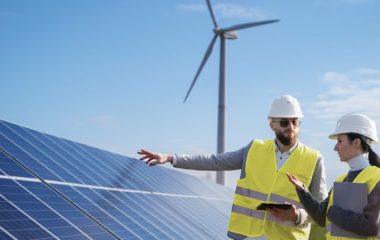
Photo: Bord Gáis Energy
British company Centrica and Mitsubishi Power Europe have signed a memorandum of understanding for the development, construction and operation of the first ammonia-based power generation facility in Europe. The location is in Ireland. The use of low-carbon ammonia as fuel can contribute to the security of electricity supply while reducing greenhouse gas emissions, according to the project partners.
The burning of ammonia results in no greenhouse gas emissions as it contains only hydrogen and nitrogen (NH3). It has higher density than hydrogen, making it easier to transport and store. The first ammonia power plant project will be developed by Centrica’s subsidiaries Bord Gáis Energy and Centrica Energy, and Mitsubishi Power Europe.
Bord Gáis Energy’s existing gas-fired power plant in Whitegate is envisaged for the development of an ammonia combustion system. It is located in the Irish city of Cork and has two gas turbines. Windsor-based Centrica claimed they can be completely switched to ammonia.
“This is one of the many projects Centrica is working on to demonstrate how the hydrogen economy could work in practice,” said CEO Chris O’Shea.
Ammonia is produced from nitrogen, sourced from the air, and green hydrogen, obtained from water in electrolyzers powered by renewable sources. The two gases react in the energy-intensive Haber-Bosch process to produce ammonia.
The world’s first project of the kind was launched in Singapore
The plant will serve as a global demonstration site for ammonia-fired power generation technology, providing insight into the feasibility and scalability of low-carbon ammonia, Centrica explained.
It would be the first such power plant in Europe. The world’s first project of this kind was launched in Singapore in 2022.
After signing the memorandum, the partners said they were forming a team to assess the project’s feasibility. The next phase will involve consultations with local stakeholders, the companies added.
The use of green ammonia for electricity generation is expensive
However, as reported by the Hydrogen Insight portal, it is not yet certain whether the project is financially sustainable. The use of green ammonia for electricity production would be very costly.
Firstly, hydrogen production requires renewable electricity. Additionally, nitrogen needs to be extracted from the air, and large amounts of green energy are also consumed in ammonia production.
Energy losses in the process are significant – 100 kWh of electricity is required for only 11 kWh to 19 kWh of energy released by ammonia combustion.
O’Shea suggested that the plant might use ammonia from abroad.


















Be the first one to comment on this article.